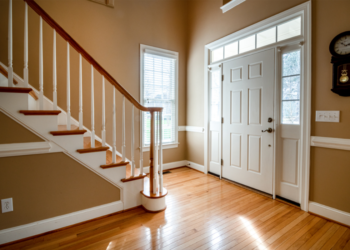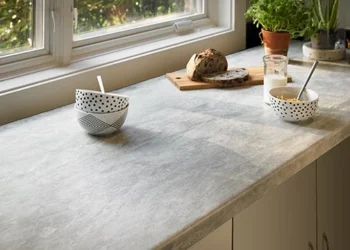Chimney cleaning is an essential aspect of home maintenance that is often overlooked but holds great importance in ensuring the safety and functionality of your fireplace and chimney. In this comprehensive guide, we will delve deep into the world of chimney cleaning, exploring the reasons why it’s crucial, the steps involved, and how to perform this task effectively. By the end of this article, you’ll have a clear understanding of how to maintain a safe and efficient chimney.
Why Chimney Cleaning Matters
A chimney is not just a decorative feature in your home; it serves a vital purpose in the safe operation of your fireplace. Over time, soot, creosote, and debris can accumulate inside the chimney, posing various hazards:
1. Fire Hazard
One of the most significant risks of a dirty chimney is the potential for a chimney fire. Soot and creosote are highly flammable, and if they ignite, they can lead to a devastating fire that can quickly spread to your entire house.
2. Carbon Monoxide Poisoning
A blocked chimney can lead to improper ventilation, causing dangerous gases like carbon monoxide to enter your living space. This colorless, odorless gas can be fatal if inhaled in high concentrations.
3. Reduced Efficiency
A dirty chimney can affect the efficiency of your fireplace or wood-burning stove. It can restrict the airflow, making it harder to light and maintain a fire, ultimately leading to wasted fuel and higher heating costs.

The Chimney Cleaning Process
Now that we understand the importance of chimney cleaning let’s explore the step-by-step process of how to clean your chimney effectively:
1. Gather Your Tools
Before you begin, ensure you have the necessary tools and safety equipment. You’ll need a chimney brush, extension rods, a vacuum cleaner, goggles, gloves, and a dust mask.
2. Clear the Area
Remove any furniture or objects near the fireplace to create a clear workspace. Lay down drop cloths to catch falling debris.
3. Inspect the Chimney
Before you start cleaning, inspect the chimney for any visible damage or obstructions. Look for cracks, loose bricks, or nests built by birds or other animals.
4. Seal the Fireplace
Close off the fireplace opening with a tarp or plastic sheet secured with tape. This prevents soot and debris from spreading into your living space.
5. Start Cleaning
Attach the chimney brush to the extension rods and begin scrubbing the inside of the chimney. Work in an up-and-down motion, making sure to reach all areas.
6. Vacuum the Debris
As you clean, use a vacuum cleaner with a HEPA filter to suck up the loosened debris. This ensures that no dust or soot is released into your home.
7. Check for Creosote Buildup
Inspect the chimney for creosote buildup. If you notice a thick, tar-like substance, it’s essential to remove it, as it’s highly flammable. You may need a professional chimney sweep for this task.
8. Reinspect and Clean the Firebox
After cleaning the chimney, reinspect the firebox and clean out any remaining debris. Ensure that the damper is working correctly.
9. Dispose of Debris Properly
Dispose of the collected debris in a sealed bag and place it in a trash bin. Do not burn it, as it can still be flammable.
When to Clean Your Chimney
Now that you know how to clean your chimney, you might be wondering when to do it. Here are some guidelines:
1. Frequency
Ideally, you should have your chimney cleaned at least once a year. However, if you use your fireplace frequently, it may require more frequent cleaning.
2. Signs of Need
Besides the annual cleaning, watch out for signs that your chimney needs immediate attention. These include:
Excessive Smoke: If you notice more smoke than usual when using your fireplace, it could indicate a blockage.
Foul Odors: Unpleasant odors coming from your fireplace could be a sign of creosote buildup.
Difficulty Starting a Fire: If you struggle to light a fire or keep it burning, your chimney might be obstructed.
Conclusion
Chimney cleaning is a vital part of home maintenance that should never be neglected. It not only ensures the safety of your home but also enhances the efficiency of your fireplace or wood-burning stove. By following the steps outlined in this guide and adhering to a regular cleaning schedule, you can enjoy the warmth and comfort of your fireplace without worry.








Comments 1